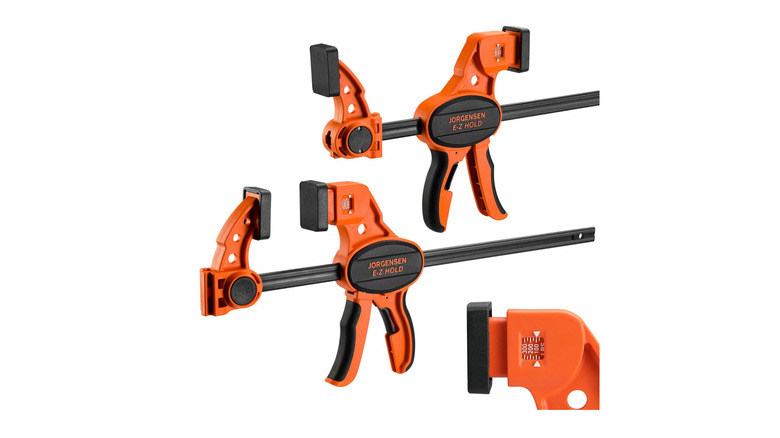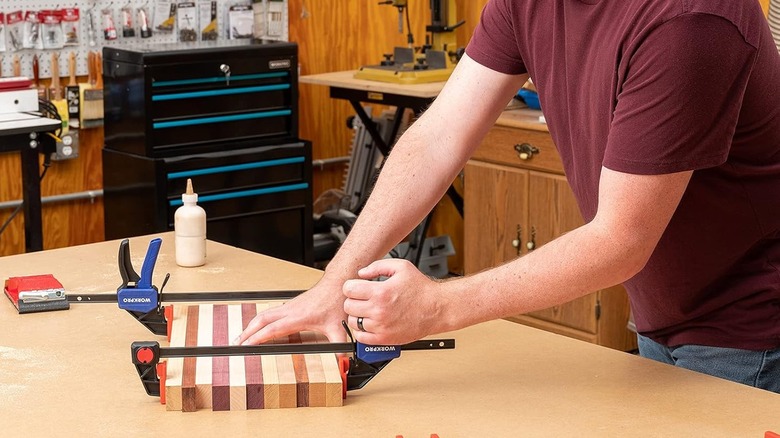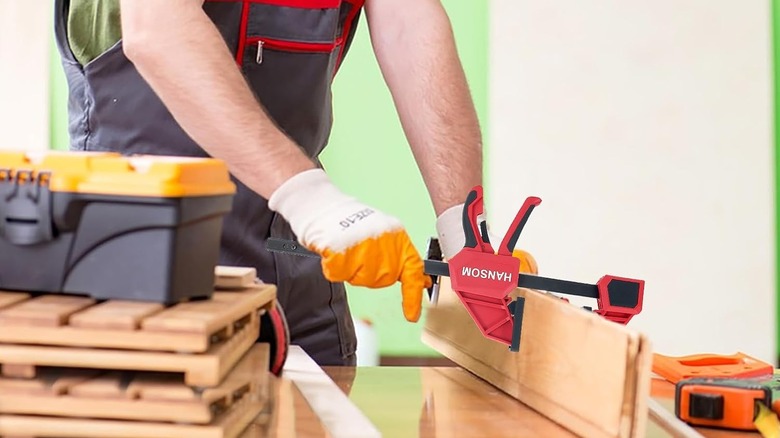Woodworking Clamps: Which One Is Also Known As A Speed Clamp? (And What Is It Used For?)
We may receive a commission on purchases made from links.
Woodworking is a trade or hobby that requires just a few basic tools to get started. Anyone with a saw, a hammer, a few chisels, and a handful of optional tools can at least make a start on a project. One of the most useful tools to add to this list is a clamp. Clamps come in a variety of flavors and can be used for everything from sawing to gluing, and sooner or later, anyone who tackles woodworking jobs is going to need one. Perhaps one of the most useful and versatile of these is the speed clamp.
The speed clamp moniker comes from the tool's fast-acting sliding jaw, which allows you to position and lock the jaw in the blink of an eye. Because the jaws and bar resemble the letter F, manufacturers and catalogs usually label it an F‑clamp, but you'll also see "bar clamp" and "speed clamp" used interchangeably. Regardless of what you call them, speed clamps — like the Jorgensen bar clamp — are an incredibly useful addition to any woodworking tool kit. They don't break the bank either, and could easily be included on our list of woodworking tools for under $50.
What can speed clamps be used for?
Two adjectives sum up this type of clamp: quick and versatile. Its speed comes from the sliding jaw, which rides on a grooved bar and locks with a trigger or cam, so you can close a wide gap almost instantly and then finish the squeeze with just a turn or two of the screw. This convenience is best demonstrated by comparing its performance with that of a typical C-clamp. Using a C-clamp involves a threaded mechanism which screws the jaws closed; certainly not as convenient as a speed clamp is, but not a huge inconvenience. This is more relevant when faced with time-sensitive jobs or those awkward situations where you wish you had more hands.
This ease of use and adaptability mean that speed clamps can tackle a wide range of woodworking jobs. A few examples include holding boards together during glue-ups, keeping a cabinet frame square while it is being assembled, securing edging while adhesive sets, or even temporarily clamping jigs in place on a workbench. Most models, like the Workpro bar clamp or the EQUIPTZ Quick Grip, also double as spreading clamps, adding to the potential range of jobs these clamps can tackle. And if you're just getting into the craft, you'll want to pair your clamp with the best wood types for beginner woodworking.
How to choose the right speed clamp
So, how do you go about choosing the right speed clamp for your next project? Picking the right one will depend on the type of work you do most. Force is one of the key factors; lighter-duty clamps with plastic jaws and lower clamping pressure, like the EHDY bar clamp, are rated for forces of 170 lbs, which is ideal for small assemblies or model work. On the other end of the spectrum is the much beefier Jorgensen 4-inch bar clamp, which is rated for up to 600 pounds, making it far more suited to heavy-duty work.
Size is another consideration. The jaw capacity — or how wide it opens — typically ranges from 6 inches to 48 inches. There's also the throat depth, which refers to the distance between the center of the clamp's screw and the inside edge of the frame. These sizes are important, as they define the size of the object you're able to clamp. You'll want to take the jaw capacity and throat depth into account, as well as the amount of force you'll need, when selecting your speed clamp. Make sure to choose one that is the best fit for the size of the project you're building.


